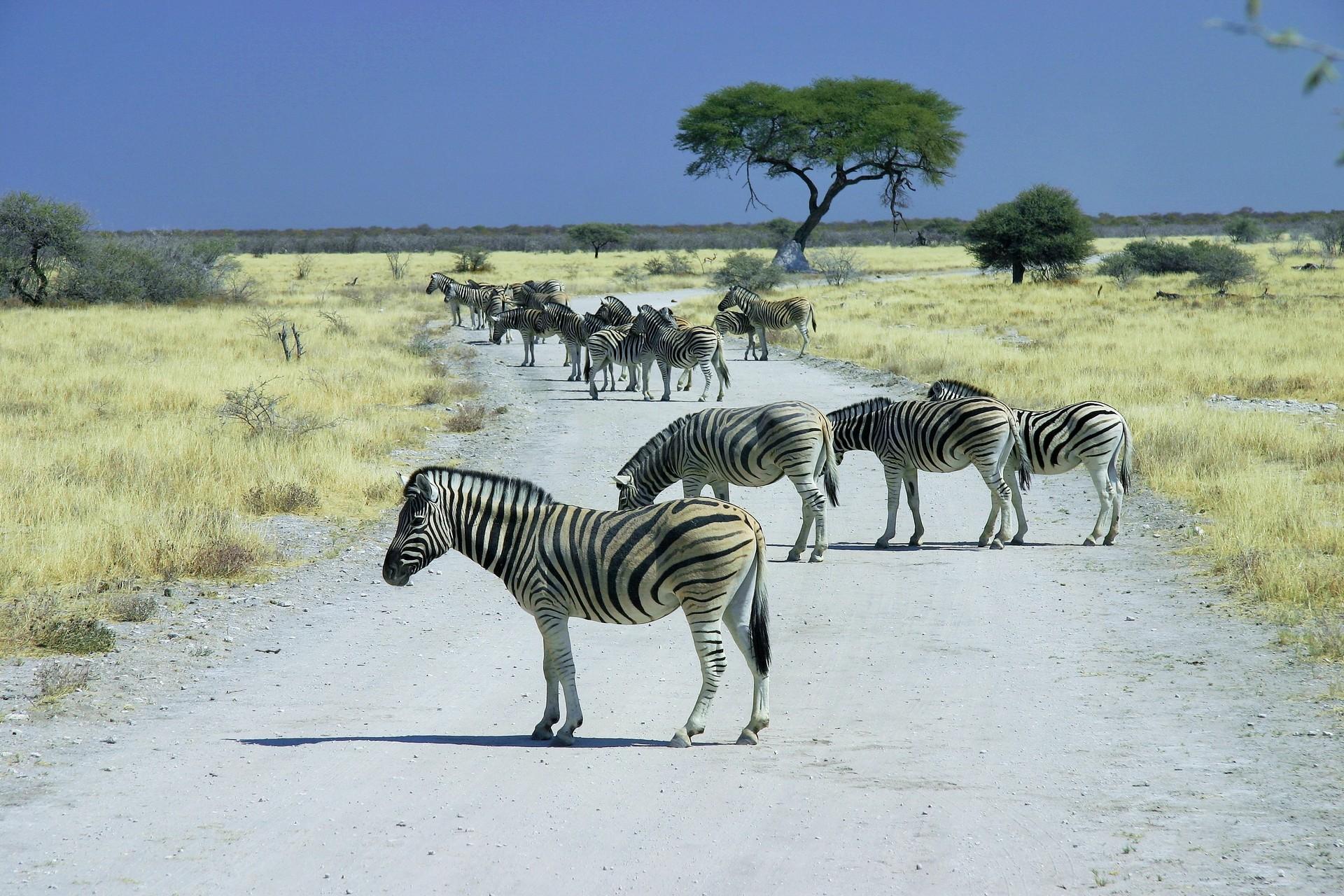Today we're going on an unconventional trip to Africa and the Coast of Skeletons.
We often imagine Africa as a very interesting continent with diverse climatic conditions and varied nature. However, one of the first associations is deserts and arid lands. But even these can hide many interesting things.
If you fancy a bit of adventure away from the tourist hinterland, take a stroll along the Skeleton Coast. Although its glory days are long behind it, you can still find crumbling shipwrecks and bleached (often human) bones.
Namibia and its sinister desert
For this unique experience, you'll have to head to southern Africa – specifically Namibia whose coastline is mostly dominated by desert. It can be divided into three distinct parts. The first is the rocky sand plains between the town of Lüderitz and the bordering Oranje River. Almost nobody is allowed to go here, as it is the Diamantensperrgebiet, or diamond mining area. Even though they are no longer sifted from the sand as they were in the early 20th century, you simply can't go near the volcanic deposits or the hardened marine alluvium from which they are dredged.
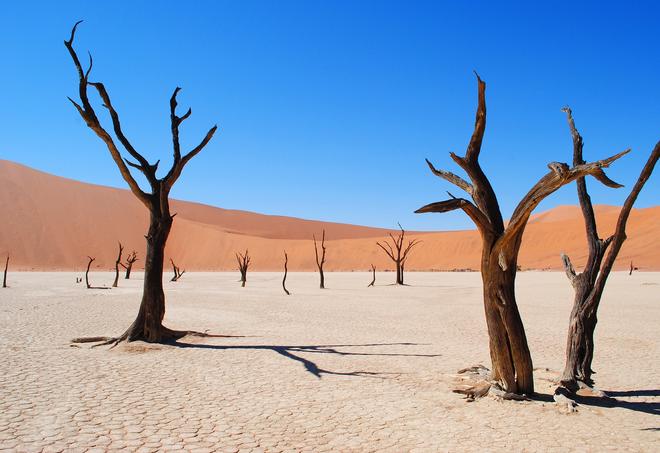
From the German-named part (a remnant of the German colonial era), however, just head north, where you'll find nearly 300 kilometres of unusually coloured sandy plain – dominated by red. The dunes can reach heights of up to two hundred metres and extend over a hundred kilometres inland.
.jpg)
The last part of the Namibian coastline is, of course, the Skeleton Coast. You'll find it between the Ugab riverbed (dry for most of the year) and Swakopmund. This is its normally accessible part.
Skeleton Coast National Park, and where the average tourist can't get to
Much more attractive, however, are the other five hundred kilometres of rocky sandy desert, which fall within the Skeleton Coast National Park. You won't be able to visit without the appropriate permits, but it's definitely worth a visit.
The Endless Place of Death
Unfortunately, even with the best documents, you can't get everywhere. The usual visitor route ends at the Terrace Bay settlement with a parking lot that can only be entered if you have two-wheel drive.
The shoreline itself slopes only very gently into the water along its entire length. Moreover, it is often shrouded in fog, because it is on this flat area that the hot inland air meets the cold Benguela sea current and its humidity. It is the fog, together with storms and the general opacity of the area, that has caused so many disasters in this area.
Most of the wrecks are from fishing and whaling boats, as the area is traditionally full of fish. But there were also merchant ships and warships. If the sailors didn't drown, they were virtually certain to die on land. The hot sand often stretches hundreds of kilometres inland.
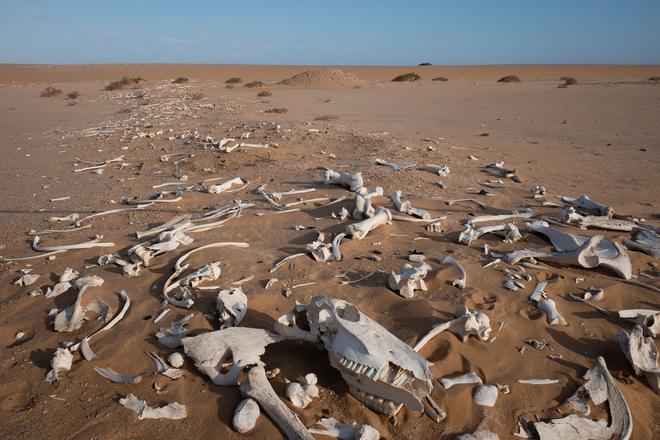
In the 19th century, there was a literal overflow of wrecks, rigging, ship chains, sails, anchors, harpoons and, of course, skeletons. Today, much of the stuff has been swallowed up by the sand and there are virtually no more unfortunate incidents. Advanced technology and satellite navigation have successfully prevented these disasters. Despite these possibilities, we still do not know how many ships have ended their journey here, or how many skeletons are crumbling under the sand.
The most famous shipwrecks on the Skeleton Coast
Like every area, this one has its legends and its most interesting destinations. Unfortunately, many of them are not accessible to tourists. Probably the most interesting story (at least to us) relates to the World War II era. That was when the British cargo ship Dunedin Star crashed into the coastal rocks here. It happened on 29 November 1942, but it took an incredible three weeks for help to reach all the survivors. The rescue operations were accompanied by a series of mishaps, and the wreckage was even spread by a few of the original rescuers (we are talking in particular about the famous ship Sir Charles Eliott). All the passengers survived, but their rescuers were far from satisfied
The wreck of the Dunedin Star is still here today, keeping company with such names as the Winstor, the Henrietta and the Shaunee (the wreck that grounded here in 1976 is one of the few that is well accessible). Another wreck of a half-broken ship, bearing the name Winston, can be found just outside the entrance to the Skeleton Coast National Park Just before the gate, turn onto the unpaved road leading out to sea. This ship has been lying here since 1970.
It's not just skeletons, go to see the sea lions!
However, the whole Skeleton Coast is not as depressing as it might seem at first glance. At kilometer 130 of this area you will find the rocky outcrop of Cape Cross, which is inhabited by the largest colony of sea lions in Namibia. Most tourists head here in December, when the pups are born and numbers can exceed 200,000, while at other times of the year there are barely a thousand of these impressive animals.
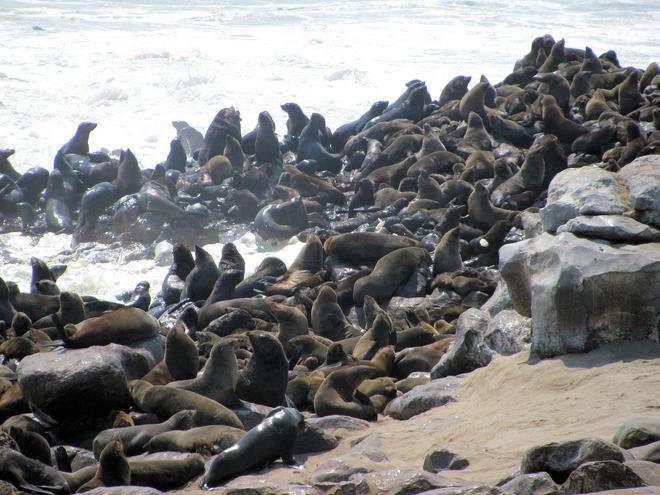
You don't have to worry about finding them. Ideal viewing points are surrounded by railings. If you stay in the designated area, you'll be safe. We recommend binoculars and a camera, of course, but the surroundings of Cape Cross will remind you what part of Africa you are in. In the sand there are many skeletons lying around with their teeth knocked out, as well as scraps of completely dried seal skin.
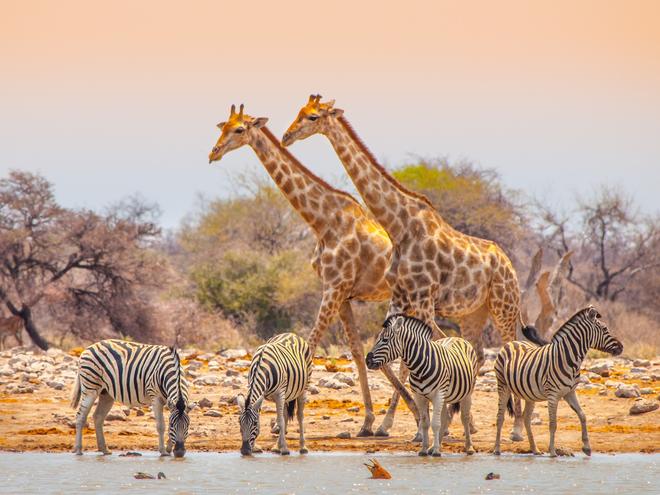
But there are also whale skeletons. Usually it's just ribs, but with a little digging you'll find several complete skeletons of cetaceans. But don't be fooled, the desert hides many other species too. Elephants, zebras, giraffes, jackals and hyenas can all be found here. Of course, don't expect a concentration like somewhere on the savannah, but it's not impossible to find. The sea lagoons are popular with numerous seabirds, and flocks of black-coloured cormorants will fly out to meet you if you get too close. The Skeleton Coast has something for everyone, just don't be afraid of its gloomy atmosphere and now undeserved reputation.
